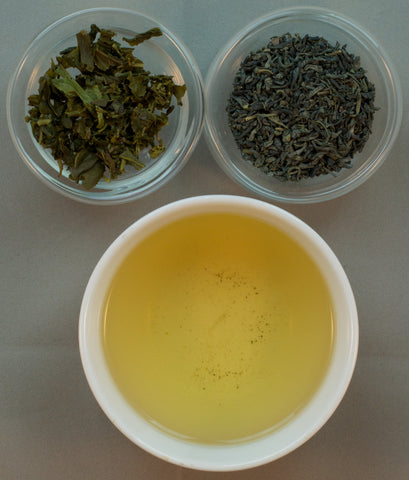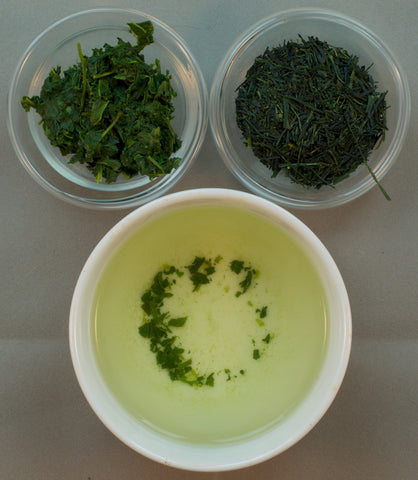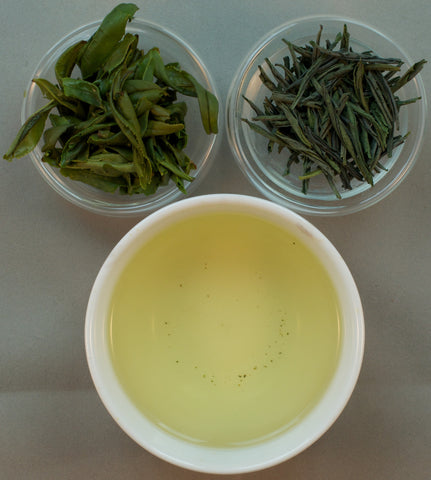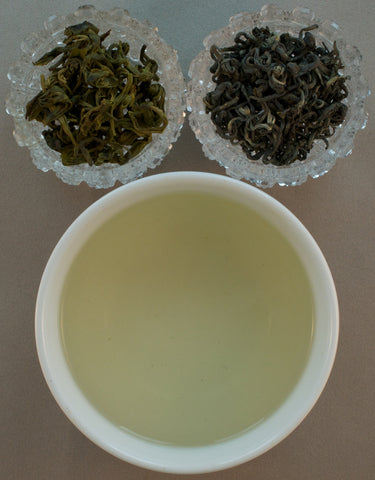Originally a peasant’s tea to cut the cost of green tea, this delicious tea blend has become one of Japan’s most popular and well-known tea for its unique taste and visual presentation. With less green tea per weight, it is also lower in caffeine so it can be enjoyed anytime of day and is a good choice for those sensitive to caffeine but who want the health benefits of green tea.
This wonderful tea is from the small, completely organic Kinezuka farm in Shizuoka. Their natural growing practices are an anomaly in the midst of Japan’s typically heavy use of chemicals in their industrialized tea industry. While I don’t intend to carry many blends here, traditional blends with only real ingredients (no “flavors”) that have the history of Gen Mai Cha are an exception.
Provenance:
-
Origin: Nakayama Village in Fujieda, Shizuoka, Japan
-
Elevation: 350m (1150ft)
-
Grower/Teamaster: Kinezuka Family
-
Harvest Date: Spring 2019
-
Cultivar: Yabukita
-
Cultivation: Natural (Organic, no cert.) Toshiaki Kinezuka started farming with all-natural methods back in 1976, so the farm has been grown with organic practices for 38 years.
-
Processing Notes: premium green tea and 100% Japanese-grown sweet mochi rice.
-
Nickname: Brown Rice Tea
-
History/Pedigree: Originally created as a peasant's tea to make drinking the (then) expensive green tea affordable.
Brewing Suggestions1:
-
Water: 195˚-205˚F
-
Tea: 2g per 4oz of water (about a level ½ TB2)
-
Infusion: 1-2 minutes, 2 infusions at lower end of temp and time range.
Tasting Notes:
- Sweet and nutty flavor with a rich savory warmth
1 Brewing suggestions are just that. Try it the suggested way then experiment. In this case I suggest first experimenting with the quantity of tea per oz of water. I actually use 4g per 4oz of water as I like the stronger flavor of a higher tea to water ratio. For temperature, 195˚ gives a nutty, sweet, profile with savory umami while 205˚ is rich and warming with very sweet, nutty notes. For a sweet, lighter profile, you can try it as low as 180˚. Some tea drinkers like to use slightly hotter and longer times for each subsequent infusion.
2 Weighing your tea is always the best way to control your dosage. I provide approximate volume measures for convenience but they can be problematic due to the variance in tea leaf shape and size. It’s best to use the single appropriate volume measure for the tea, i.e., don’t try to measure 1.5TB using two spoons meant to measure 1 TB and a ½ TB. Use an actual 1.5 TB measuring spoon. Yes, they make them! I like the oblong ones to handle longer leaf styles.



